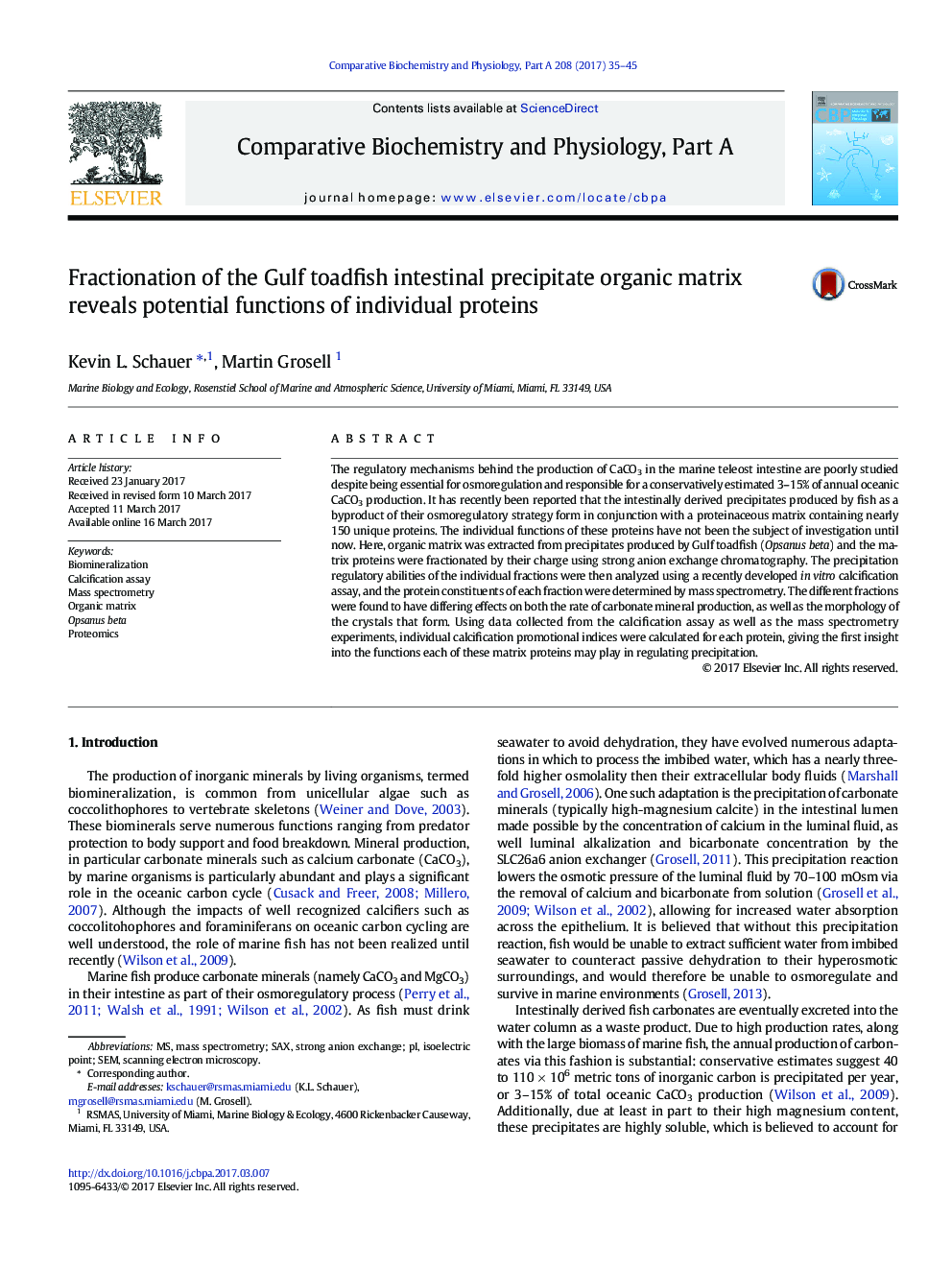| Article ID | Journal | Published Year | Pages | File Type |
|---|---|---|---|---|
| 5510364 | Comparative Biochemistry and Physiology Part A: Molecular & Integrative Physiology | 2017 | 11 Pages |
The regulatory mechanisms behind the production of CaCO3 in the marine teleost intestine are poorly studied despite being essential for osmoregulation and responsible for a conservatively estimated 3-15% of annual oceanic CaCO3 production. It has recently been reported that the intestinally derived precipitates produced by fish as a byproduct of their osmoregulatory strategy form in conjunction with a proteinaceous matrix containing nearly 150 unique proteins. The individual functions of these proteins have not been the subject of investigation until now. Here, organic matrix was extracted from precipitates produced by Gulf toadfish (Opsanus beta) and the matrix proteins were fractionated by their charge using strong anion exchange chromatography. The precipitation regulatory abilities of the individual fractions were then analyzed using a recently developed in vitro calcification assay, and the protein constituents of each fraction were determined by mass spectrometry. The different fractions were found to have differing effects on both the rate of carbonate mineral production, as well as the morphology of the crystals that form. Using data collected from the calcification assay as well as the mass spectrometry experiments, individual calcification promotional indices were calculated for each protein, giving the first insight into the functions each of these matrix proteins may play in regulating precipitation.
